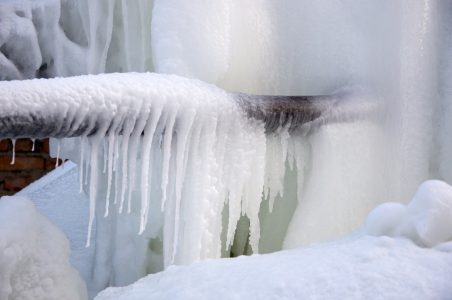Important Tips to Avoid Frozen Pipes in Winter: Professional Insights
Important Tips to Avoid Frozen Pipes in Winter: Professional Insights
Blog Article
Listed here on the next paragraphs you might get some great expertise around How to prepare your home plumbing for winter weather.

Cold weather can wreak havoc on your plumbing, specifically by freezing pipelines. Below's how to prevent it from happening and what to do if it does.
Intro
As temperature levels decrease, the risk of frozen pipes rises, possibly resulting in costly repair work and water damage. Recognizing exactly how to prevent icy pipes is essential for homeowners in chilly climates.
Recognizing Frozen Pipelines
What causes pipelines to freeze?
Pipelines ice up when exposed to temperatures below 32 ° F (0 ° C) for expanded periods. As water inside the pipes ices up, it broadens, putting pressure on the pipeline wall surfaces and potentially creating them to rupture.
Risks and problems
Frozen pipelines can result in water supply disturbances, building damage, and pricey repair work. Ruptured pipes can flooding homes and create considerable structural damages.
Signs of Frozen Water Lines
Recognizing frozen pipes early can avoid them from rupturing.
Just how to identify frozen pipelines
Look for reduced water circulation from taps, uncommon smells or sounds from pipes, and visible frost on exposed pipes.
Prevention Tips
Insulating vulnerable pipelines
Cover pipelines in insulation sleeves or utilize heat tape to protect them from freezing temperature levels. Concentrate on pipes in unheated or external locations of the home.
Heating techniques
Keep indoor areas sufficiently heated, specifically areas with pipes. Open up cabinet doors to permit cozy air to circulate around pipelines under sinks.
Shielding Outside Plumbing
Garden hoses and exterior taps
Disconnect and drain pipes garden hoses prior to wintertime. Install frost-proof faucets or cover outside taps with protected caps.
What to Do If Your Pipes Freeze
Immediate activities to take
If you suspect icy pipes, maintain taps available to ease stress as the ice melts. Use a hairdryer or towels soaked in warm water to thaw pipelines slowly.
Long-Term Solutions
Architectural changes
Consider rerouting pipes far from exterior walls or unheated locations. Include added insulation to attics, basements, and crawl spaces.
Updating insulation
Purchase high-quality insulation for pipes, attics, and wall surfaces. Correct insulation helps maintain consistent temperatures and decreases the threat of icy pipelines.
Verdict
Preventing icy pipelines calls for positive steps and quick feedbacks. By recognizing the causes, signs, and preventive measures, house owners can safeguard their plumbing throughout cold weather.
5 Ways to Prevent Frozen Pipes
Drain Outdoor Faucets and Disconnect Hoses
First, close the shut-off valve that controls the flow of water in the pipe to your outdoor faucet. Then, head outside to disconnect and drain your hose and open the outdoor faucet to allow the water to completely drain out of the line. Turn off the faucet when done. Finally, head back to the shut-off valve and drain the remaining water inside the pipe into a bucket or container. Additionally, if you have a home irrigation system, you should consider hiring an expert to clear the system of water each year.
Insulate Pipes
One of the best and most cost-effective methods for preventing frozen water pipes is to wrap your pipes with insulation. This is especially important for areas in your home that aren’t exposed to heat, such as an attic. We suggest using foam sleeves, which can typically be found at your local hardware store.
Keep Heat Running at 65
Your pipes are located inside your walls, and the temperature there is much colder than the rest of the house. To prevent your pipes from freezing, The Insurance Information Institute suggests that you keep your home heated to at least 65 degrees, even when traveling. You may want to invest in smart devices that can keep an eye on the temperature in your home while you’re away.
Leave Water Dripping
Moving water — even a small trickle — can prevent ice from forming inside your pipes. When freezing temps are imminent, start a drip of water from all faucets that serve exposed pipes. Leaving a few faucets running will also help relieve pressure inside the pipes and help prevent a rupture if the water inside freezes.
Open Cupboard Doors
Warm your kitchen and bathroom pipes by opening cupboards and vanities. You should also leave your interior doors ajar to help warm air circulate evenly throughout your home.

I found that blog entry on How To Avoid Freezing Pipes while doing a lookup on the internet. Sharing is good. Helping others is fun. Bless you for your time. Come back soon.
Go Company Report this page